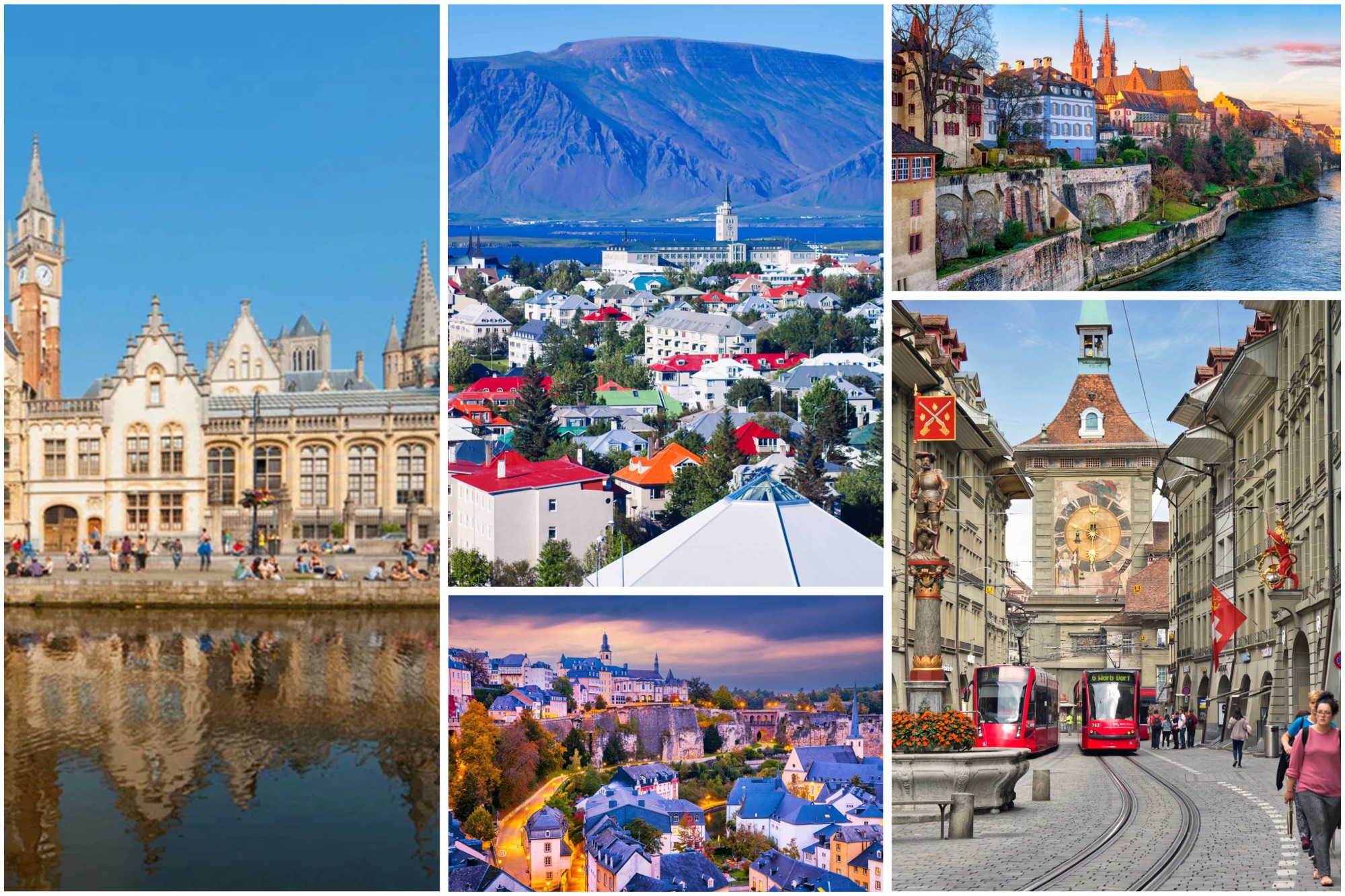According to a recent study by Oxford Economics, a scenic French city has been recognized as having the highest global quality of life. The Global Cities Index for 2024 assessed cities based on six criteria: life expectancy, personal income, income distribution, availability of recreational and cultural amenities, internet access, and housing affordability.
While most of the top-ranked cities are in Europe, an Australian city also made the list.
Have you visited any of these cities? Would you contemplate moving there? Let us know your thoughts in the comments.
10. Nantes, France
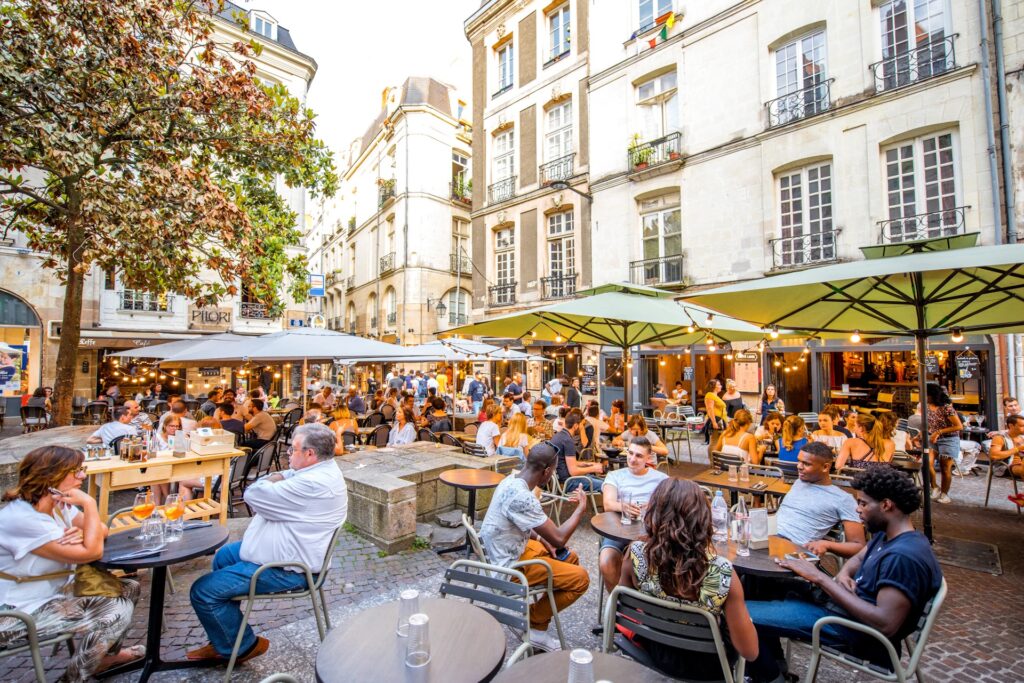
Nantes, located in western France along the Loire River, is a city rich in history, culture, and innovation. Once the capital of the historic Duchy of Brittany, Nantes boasts a blend of medieval and modern architecture, charming streets, and vibrant cultural scenes.
Historically a hub for maritime trade, Nantes’ maritime past is still evident in its port area and the famous Machines of the Isle of Nantes, where fantastical mechanical creatures roam. The city is renowned for its commitment to the arts and culture, with numerous museums, galleries, and theaters showcasing everything from contemporary art to historical artifacts.
Nantes is also celebrated for its green spaces and outdoor activities. The Île de Versailles, a Japanese-inspired garden on an island in the Erdre River, offers a tranquil escape in the heart of the city. The Erdre River itself is popular for boating and water sports, while the Loire Valley vineyards nearby provide opportunities for wine tasting and scenic tours.
In recent years, Nantes has gained recognition for its sustainability efforts and quality of life, consistently ranking high in global quality of life indexes. The city is known for its excellent public transportation system, bicycle-friendly infrastructure, and commitment to environmental initiatives.
Culinary enthusiasts will find Nantes a delight, with its local specialties such as crêpes, galettes, and Muscadet wine. The city’s markets offer fresh produce, seafood, and artisanal products that reflect the region’s gastronomic heritage.
Overall, Nantes combines historical charm with a forward-looking attitude, making it an appealing destination for tourists, students, and professionals alike. Its dynamic cultural scene, beautiful surroundings, and quality of life make it a gem in the landscape of French cities.
9. Ghent, Belgium
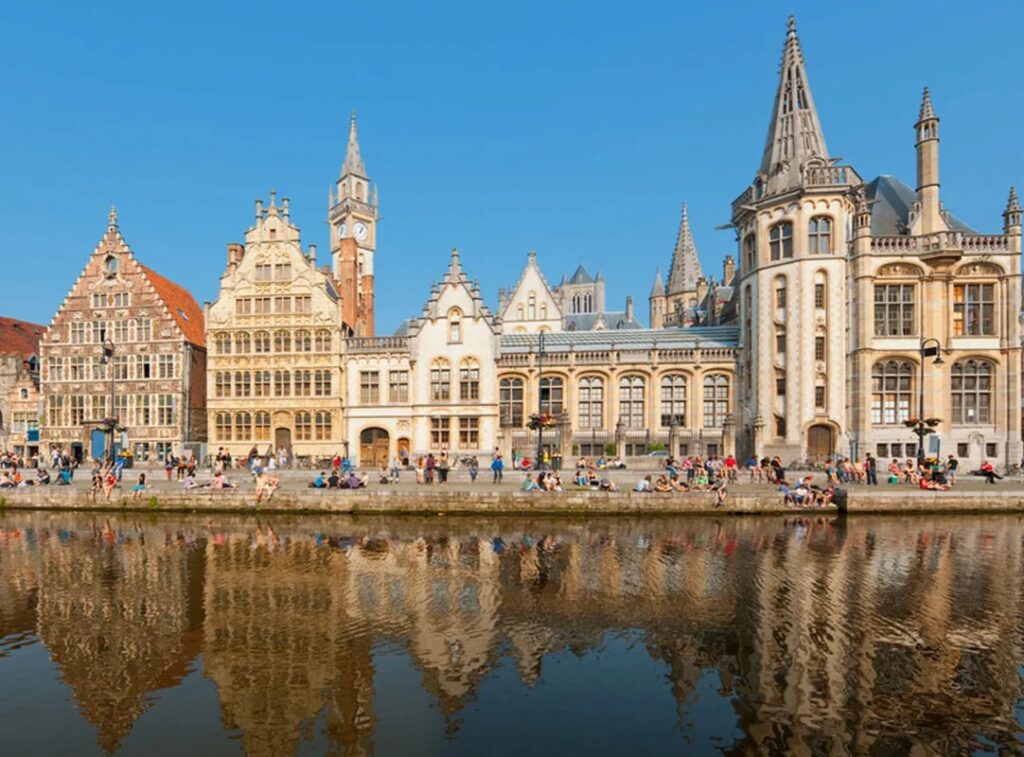
Ghent, located in the Flemish region of Belgium, is a vibrant city known for its rich history, stunning architecture, and lively cultural scene. Nestled at the confluence of the Scheldt and Lys rivers, Ghent is one of Belgium’s oldest cities, with a history dating back to Roman times.
The city’s medieval past is evident in its well-preserved architecture. The Gravensteen Castle, a majestic fortress from the 12th century, offers a glimpse into Ghent’s medieval history. The Saint Bavo’s Cathedral, another architectural marvel, houses the world-famous Ghent Altarpiece by the Van Eyck brothers. Strolling through the city, one can admire the beautiful facades of the buildings lining the Graslei and Korenlei, two picturesque streets along the Leie River.
Ghent is also a city of learning and innovation, home to Ghent University, one of Belgium’s leading academic institutions. The university contributes to the city’s youthful and dynamic atmosphere, with numerous festivals, concerts, and events happening throughout the year.
The city’s cultural scene is vibrant and diverse. The Museum of Fine Arts, the S.M.A.K. (Museum of Contemporary Art), and the Design Museum offer rich artistic experiences for locals and visitors alike. Ghent is also known for its music festivals, including the annual Gentse Feesten, a ten-day cultural festival that transforms the city into a hub of music, theater, and performance.
Ghent has embraced sustainability and green living, with extensive cycling paths and eco-friendly initiatives. The city’s commitment to sustainability is also reflected in its culinary scene, which features numerous vegetarian and vegan-friendly restaurants. Local specialties include Gentse Waterzooi, a creamy stew typically made with chicken or fish, and the famous Belgian waffles and chocolates.
The city’s nightlife is lively, with numerous bars, cafes, and clubs. The Patershol district, with its narrow cobbled streets, is a popular area for dining and entertainment.
Overall, Ghent combines historical charm with a modern, forward-thinking spirit. Its rich history, cultural vibrancy, and commitment to sustainability make it a compelling destination for travelers and an attractive place to live.
8. Zurich, Switzerland
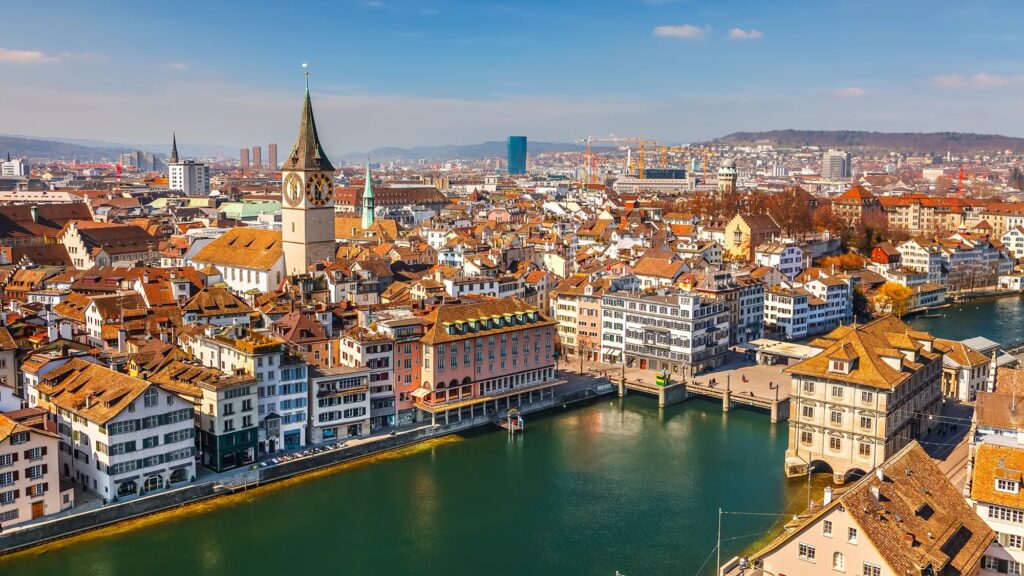
Zurich, the largest city in Switzerland, is renowned for its stunning natural scenery, vibrant cultural scene, and status as a global financial hub. Located at the northern tip of Lake Zurich and surrounded by picturesque mountains, the city offers a perfect blend of urban sophistication and outdoor beauty.
The city’s historical roots are evident in its well-preserved medieval old town, characterized by narrow, winding streets, charming buildings, and notable landmarks such as the Grossmünster and Fraumünster churches. The Grossmünster, a Romanesque-style Protestant church, is one of Zurich’s most iconic landmarks, while the Fraumünster is famed for its stunning stained glass windows by Marc Chagall.
Zurich’s Bahnhofstrasse, one of the world’s most exclusive shopping streets, offers luxury boutiques, department stores, and cafes, making it a paradise for shoppers. The city’s financial district underscores Zurich’s reputation as a leading global financial center, home to numerous banks, financial institutions, and the Swiss stock exchange.
Culturally, Zurich is rich and diverse. The Kunsthaus Zürich (Zurich Art Museum) houses an impressive collection of modern and contemporary art, including works by Swiss artists such as Alberto Giacometti and Ferdinand Hodler. The city is also home to the Swiss National Museum, which provides a comprehensive overview of Switzerland’s cultural history.
Zurich’s music and theater scene is vibrant, with the Zurich Opera House and Schauspielhaus Zurich offering world-class performances. The city hosts numerous festivals throughout the year, including the Zurich Film Festival, which attracts international filmmakers and stars.
Outdoor enthusiasts will find plenty to do in Zurich. The city’s parks and green spaces, such as the Zurich Botanical Garden and the Chinese Garden, offer tranquil retreats. Lake Zurich is a hub for water sports, boating, and lakeside relaxation, while the nearby Uetliberg Mountain provides hiking and panoramic views of the city and the Alps.
Zurich is also known for its high quality of life. The city’s efficient public transportation system, excellent healthcare, and commitment to sustainability contribute to its reputation as one of the most livable cities in the world. Zurich is a leader in green initiatives, with extensive cycling paths, renewable energy projects, and eco-friendly urban planning.
The culinary scene in Zurich is diverse, offering everything from traditional Swiss dishes to international cuisine. Local specialties include Zürcher Geschnetzeltes, a veal dish served with creamy mushroom sauce and Rösti (Swiss-style potatoes). The city’s vibrant café culture and numerous gourmet restaurants cater to all tastes.
Overall, Zurich is a city that seamlessly combines historical charm with modern innovation, offering a high quality of life, rich cultural experiences, and stunning natural beauty. Its dynamic atmosphere and commitment to excellence make it a standout destination in Europe.
7. Reykjavik, Iceland
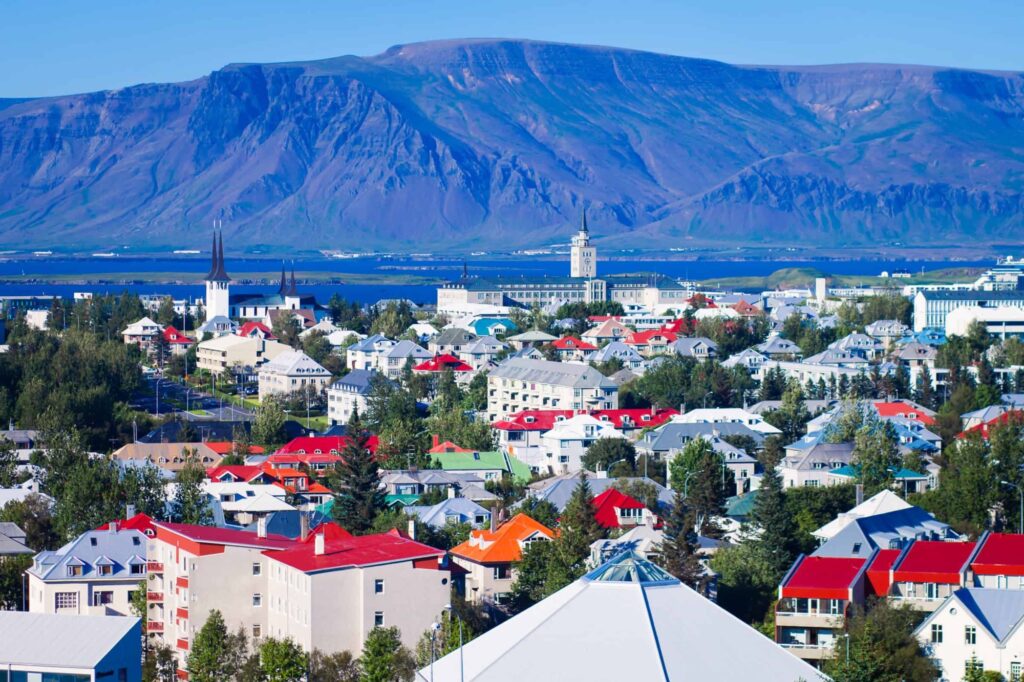
Reykjavik, the capital and largest city of Iceland, is a unique blend of natural beauty, rich history, and modern innovation. Situated on the southwestern coast of the country, Reykjavik is known for its stunning landscapes, vibrant cultural scene, and progressive society.
One of the most striking aspects of Reykjavik is its natural surroundings. The city is surrounded by mountains, the North Atlantic Ocean, and numerous geothermal sites, making it a haven for outdoor enthusiasts. The nearby Blue Lagoon, a geothermal spa renowned for its mineral-rich waters, is a popular destination for both locals and tourists.
Reykjavik’s history is deeply intertwined with the Viking Age, and the city’s name itself means “Smoky Bay,” a reference to the steam rising from the area’s hot springs. The National Museum of Iceland and the Saga Museum offer insights into the country’s Viking heritage and historical development. The city is also home to the Reykjavik Maritime Museum, which showcases Iceland’s strong connection to the sea and fishing industry.
Architecturally, Reykjavik is a mix of colorful, traditional houses and modern, innovative designs. The Hallgrímskirkja church, with its distinctive tower, is one of the city’s most iconic landmarks, offering panoramic views of Reykjavik and its surroundings. Another notable architectural marvel is the Harpa Concert Hall and Conference Centre, a striking glass building that hosts concerts, conferences, and cultural events.
The cultural scene in Reykjavik is vibrant and diverse. The city is famous for its music, arts, and literary festivals, including the Iceland Airwaves music festival and the Reykjavik International Film Festival. The city’s galleries, theaters, and music venues regularly feature local and international artists, contributing to a dynamic cultural life.
Reykjavik is also known for its commitment to sustainability and green living. The city’s energy supply is almost entirely sourced from renewable geothermal and hydroelectric power, and it has extensive initiatives to reduce carbon emissions and promote eco-friendly practices.
Culinary enthusiasts will find Reykjavik a delightful place to explore. The city’s restaurants offer a range of traditional Icelandic dishes, such as lamb, seafood, and skyr (a type of yogurt). Reykjavik’s food scene also includes innovative cuisine that reflects global influences and modern trends.
Reykjavik’s nightlife is lively and eclectic, with a range of bars, cafes, and clubs that cater to different tastes. The city’s downtown area, particularly Laugavegur street, is a bustling hub of activity, especially on weekends.
In terms of quality of life, Reykjavik is known for its clean air, low crime rate, and strong sense of community. The city’s public transportation system is efficient, and its healthcare and education systems are highly regarded.
Overall, Reykjavik is a city that offers a unique blend of natural wonders, rich cultural heritage, and modern amenities. Its commitment to sustainability, vibrant arts scene, and welcoming atmosphere make it an appealing destination for visitors and an attractive place to live.
6. Luxembourg, Luxembourg
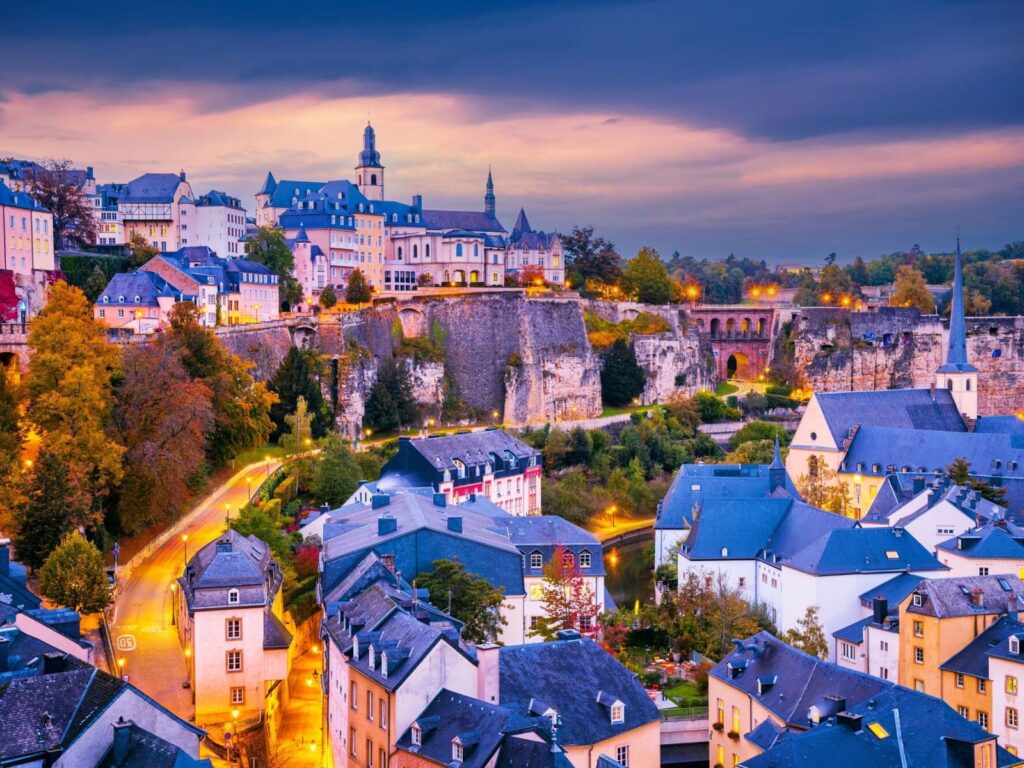
Luxembourg City, the capital of the Grand Duchy of Luxembourg, is a picturesque and culturally rich city that combines a rich history with modern sophistication. Nestled in the heart of Europe, Luxembourg City is known for its strategic location, vibrant international community, and high quality of life.
One of the defining features of Luxembourg City is its dramatic topography. The city is built on several levels, with deep gorges carved by the Alzette and Pétrusse rivers. This unique landscape is marked by impressive fortifications, ancient bridges, and lush green spaces. The historic old town, a UNESCO World Heritage site, is perched on a rocky outcrop and is home to narrow, winding streets, charming squares, and stunning architectural landmarks.
The Grand Ducal Palace, the official residence of the Grand Duke, is a prime example of the city’s historical and architectural heritage. The Notre-Dame Cathedral, with its striking Gothic architecture, and the Bock Casemates, a vast network of underground tunnels and galleries, are other significant historical sites.
Luxembourg City is a major financial center and is home to numerous European Union institutions, including the European Court of Justice and the European Investment Bank. This status as a financial and political hub attracts a diverse and cosmopolitan population, giving the city a dynamic and international atmosphere.
Culturally, Luxembourg City offers a wealth of experiences. The Mudam (Musée d’Art Moderne Grand-Duc Jean) showcases contemporary art from around the world, while the National Museum of History and Art provides insights into Luxembourg’s rich cultural heritage. The Philharmonie Luxembourg is renowned for its world-class concerts and performances, attracting artists and audiences from around the globe.
The city’s culinary scene reflects its multicultural population, offering a wide range of dining options from traditional Luxembourgish cuisine to international flavors. Local specialties include Judd mat Gaardebounen (smoked pork with broad beans) and Gromperekichelcher (potato pancakes). The city’s markets and gourmet shops also highlight the region’s fine wines and artisanal products.
Luxembourg City is known for its green spaces and outdoor activities. The Pétrusse Valley Park and the extensive network of parks and gardens provide residents and visitors with ample opportunities for leisure and recreation. The city’s commitment to sustainability and environmental preservation is evident in its well-maintained public spaces and eco-friendly initiatives.
In terms of quality of life, Luxembourg City consistently ranks high in global assessments. The city offers excellent healthcare and education systems, a safe environment, and efficient public transportation. Its strategic location in Europe makes it an ideal base for exploring neighboring countries such as France, Germany, and Belgium.
Overall, Luxembourg City is a captivating blend of history, culture, and modernity. Its unique landscape, international outlook, and high standard of living make it a standout destination in Europe and an attractive place to live and work.
5. Basel, Switzerland
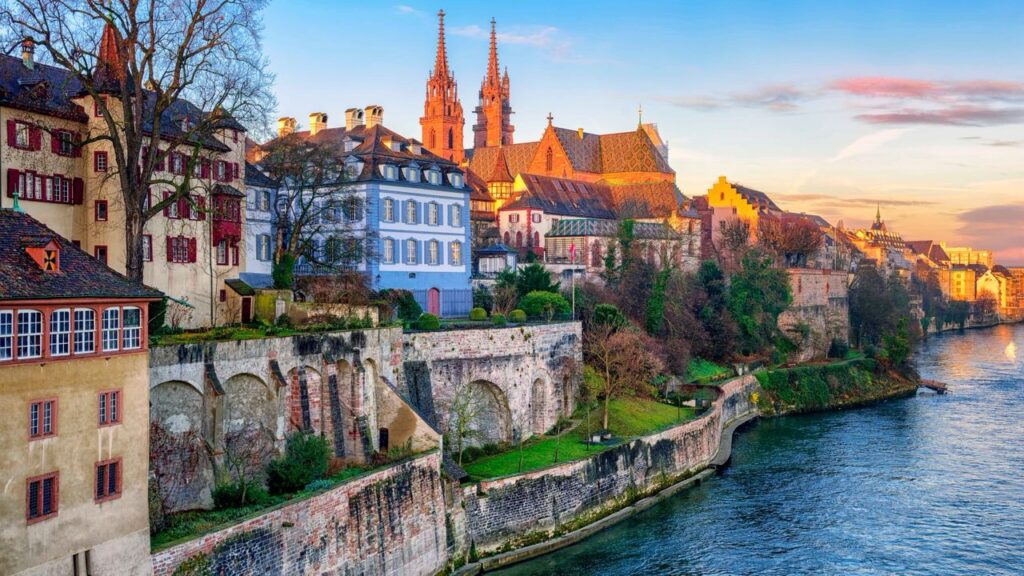
Basel, located in the northwestern part of Switzerland near the borders with France and Germany, is a city renowned for its vibrant cultural scene, rich history, and significant contributions to the arts and sciences. As Switzerland’s third-largest city, Basel offers a unique blend of medieval charm and modern innovation.
One of Basel’s most distinctive features is its historic old town, characterized by narrow cobblestone streets, medieval buildings, and charming squares. Landmarks such as the Basel Minster, a stunning Gothic cathedral with twin towers, and the Rathaus (Town Hall), with its red sandstone facade and colorful murals, highlight the city’s rich architectural heritage. The Spalentor, one of the ancient city gates, provides a glimpse into Basel’s medieval past.
Basel is a major cultural hub, often referred to as the cultural capital of Switzerland. The city is home to over 40 museums, many of which are renowned internationally. The Kunstmuseum Basel, the oldest public art collection in the world, boasts an impressive array of works from the Middle Ages to contemporary art. The Fondation Beyeler, located just outside the city, features a remarkable collection of modern and contemporary art in a serene park setting.
Basel is also famous for its vibrant cultural festivals and events. Art Basel, one of the world’s premier contemporary art fairs, attracts artists, collectors, and enthusiasts from around the globe. The Basel Fasnacht, a colorful and lively carnival, is the largest in Switzerland and a key part of the city’s cultural identity.
The city’s location on the banks of the Rhine River adds to its scenic beauty and provides numerous opportunities for outdoor activities. The riverbanks are popular spots for walking, cycling, and picnicking, and during the summer, locals and visitors alike enjoy swimming in the Rhine. The nearby Jura Mountains and the Black Forest in Germany offer additional recreational options for hiking and nature exploration.
Basel is a significant center for the life sciences and pharmaceuticals industries, hosting the headquarters of major companies such as Novartis and Roche. This strong industrial presence contributes to the city’s economic vitality and innovation. The University of Basel, one of the oldest universities in Switzerland, is a leading institution in research and education, further enhancing the city’s reputation as a hub of knowledge and innovation.
Culinary enthusiasts will find Basel a delightful place to explore. The city’s restaurants offer a wide range of cuisines, reflecting its multicultural population and proximity to France and Germany. Traditional Swiss dishes, such as raclette and fondue, are popular, along with local specialties like Basler Läckerli, a type of gingerbread.
In terms of quality of life, Basel consistently ranks high due to its excellent healthcare, education systems, and efficient public transportation. The city’s commitment to sustainability is evident in its green spaces, cycling infrastructure, and environmental initiatives.
Overall, Basel is a city that seamlessly combines its rich historical heritage with a dynamic and forward-thinking outlook. Its cultural vibrancy, scenic beauty, and high quality of life make it an attractive destination for visitors and a great place to live and work.
4. Bergen, Norway
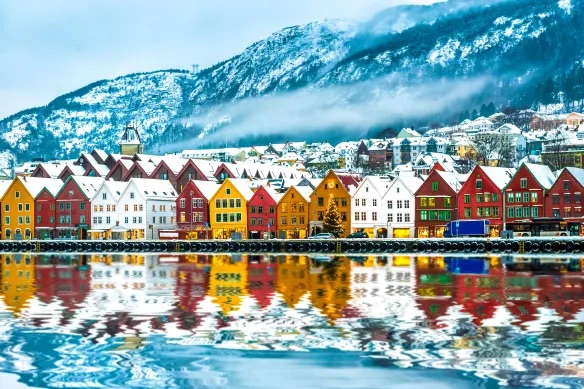
Bergen, Norway’s second-largest city, is a picturesque and culturally rich destination nestled between fjords and mountains on the country’s western coast. Known as the “Gateway to the Fjords,” Bergen is famous for its stunning natural beauty, historic charm, and vibrant cultural scene.
One of Bergen’s most iconic features is its historic Bryggen wharf, a UNESCO World Heritage site. This area is characterized by its colorful wooden houses dating back to the Hanseatic League, reflecting the city’s significance as a trading hub in the Middle Ages. Strolling through Bryggen’s narrow alleyways, visitors can explore artisanal shops, galleries, and museums that highlight the city’s maritime heritage.
The city is surrounded by seven mountains, offering numerous opportunities for outdoor activities. Mount Fløyen and Mount Ulriken are particularly popular, providing hiking trails with breathtaking views of the city and fjords. The Fløibanen funicular takes visitors to the top of Mount Fløyen, where they can enjoy panoramic vistas and various outdoor activities.
Bergen is also a major center for culture and the arts in Norway. The city hosts the annual Bergen International Festival, which features a diverse program of music, dance, theater, and visual arts. The Bergen Philharmonic Orchestra, one of the oldest orchestras in the world, performs regularly at the Grieg Hall, named after the famous composer Edvard Grieg, who was born in Bergen. Grieg’s former home, Troldhaugen, is now a museum dedicated to his life and work.
The city’s art scene is vibrant, with numerous galleries and museums showcasing contemporary and historical art. The KODE Art Museums and Composer Homes, one of the largest museum complexes in Scandinavia, includes collections of fine art, design, and music, with works by Edvard Munch, Pablo Picasso, and other renowned artists.
Bergen’s waterfront fish market, Torget, is a bustling spot where visitors can sample fresh seafood, including local specialties like smoked salmon, king crab, and the traditional “Bergensk fiskesuppe” (Bergen fish soup). The city’s culinary scene is diverse, featuring a mix of traditional Norwegian cuisine and international flavors. Bergen’s cafes and restaurants often emphasize locally sourced ingredients, reflecting the region’s rich culinary heritage.
The city is also an educational hub, home to the University of Bergen, which contributes to the city’s dynamic and youthful atmosphere. The university is known for its strong research programs, particularly in marine and climate sciences, leveraging Bergen’s coastal location.
In terms of quality of life, Bergen ranks highly with its clean air, excellent public services, and strong sense of community. The city’s compact size and efficient public transportation system make it easy to navigate, while its green initiatives and emphasis on sustainability highlight its commitment to preserving the natural environment.
Overall, Bergen offers a unique blend of natural beauty, historical charm, and cultural richness. Its stunning landscapes, vibrant arts scene, and high quality of life make it an appealing destination for visitors and a wonderful place to live.
3. Bern, Switzerland
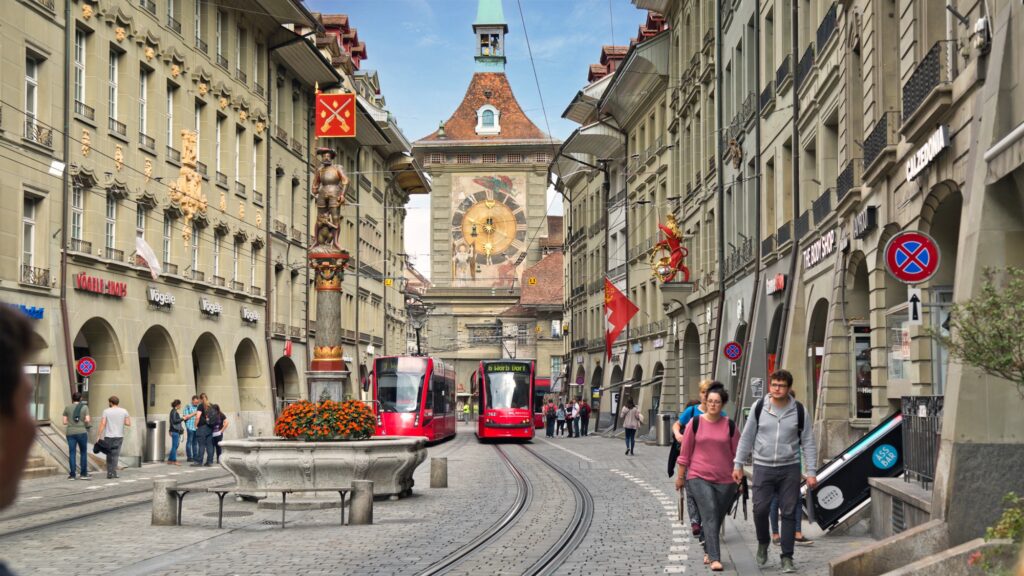
Bern, the capital of Switzerland, is a city renowned for its medieval architecture, rich cultural heritage, and picturesque landscapes. Nestled along the banks of the Aare River, Bern offers a unique blend of historical charm and modern amenities, making it a captivating destination for visitors and a great place to live.
The city’s old town, a UNESCO World Heritage site, is a testament to Bern’s well-preserved medieval history. Its cobblestone streets, historic buildings, and distinctive arcades (covered walkways) create a charming and inviting atmosphere. The Zytglogge, a medieval clock tower with an intricate astronomical clock, is one of Bern’s most iconic landmarks. Visitors can also explore the Münster Cathedral, Switzerland’s tallest cathedral, which offers stunning views of the city from its tower.
Bern is also home to the Federal Palace, the seat of the Swiss Federal Assembly and the Federal Council. This impressive building reflects Bern’s status as the political heart of Switzerland. Guided tours of the Federal Palace provide insights into the country’s political system and history.
Cultural enthusiasts will find plenty to explore in Bern. The city boasts a variety of museums and galleries, including the Bern Historical Museum, which offers extensive exhibits on the city’s history and culture, and the Zentrum Paul Klee, dedicated to the works of Swiss painter Paul Klee. The Kunstmuseum Bern (Museum of Fine Arts) houses an impressive collection of artworks from different periods, including pieces by renowned artists like Pablo Picasso and Ferdinand Hodler.
Bern’s natural beauty is another major draw. The city is surrounded by rolling hills, forests, and the scenic Aare River, which offers numerous outdoor activities. The Rosengarten (Rose Garden) provides a tranquil escape with its beautiful floral displays and panoramic views of the old town. The Gurten, a local mountain, is a popular spot for hiking, picnicking, and enjoying the breathtaking vistas of the Swiss Alps and the city below.
The Aare River is a focal point for recreation in Bern. During the summer months, locals and visitors alike enjoy swimming in the river’s clean, refreshing waters. The Marzili, a popular riverside bathing area, is a favorite spot for sunbathing and relaxing.
Bern’s culinary scene reflects its rich cultural diversity and emphasis on quality. The city offers a wide range of dining options, from traditional Swiss cuisine to international fare. Local specialties include Bernese Platte, a hearty dish featuring various meats and sausages, and Rösti, a Swiss potato dish. The city’s markets, such as the Bundesplatz market, offer fresh local produce, cheeses, and artisanal products.
In terms of quality of life, Bern consistently ranks highly due to its excellent healthcare, education systems, and efficient public transportation. The city’s commitment to sustainability is evident in its well-maintained green spaces, cycling paths, and environmental initiatives.
Bern also hosts numerous festivals and events throughout the year, including the Bern Carnival, the International Jazz Festival, and the Zibelemärit (Onion Market), a traditional folk festival celebrating the onion harvest with food, music, and crafts.
Overall, Bern is a city that seamlessly combines historical charm with modern living. Its rich cultural heritage, stunning natural surroundings, and high quality of life make it a standout destination in Switzerland and an appealing place to call home.
2. Canberra, Australia
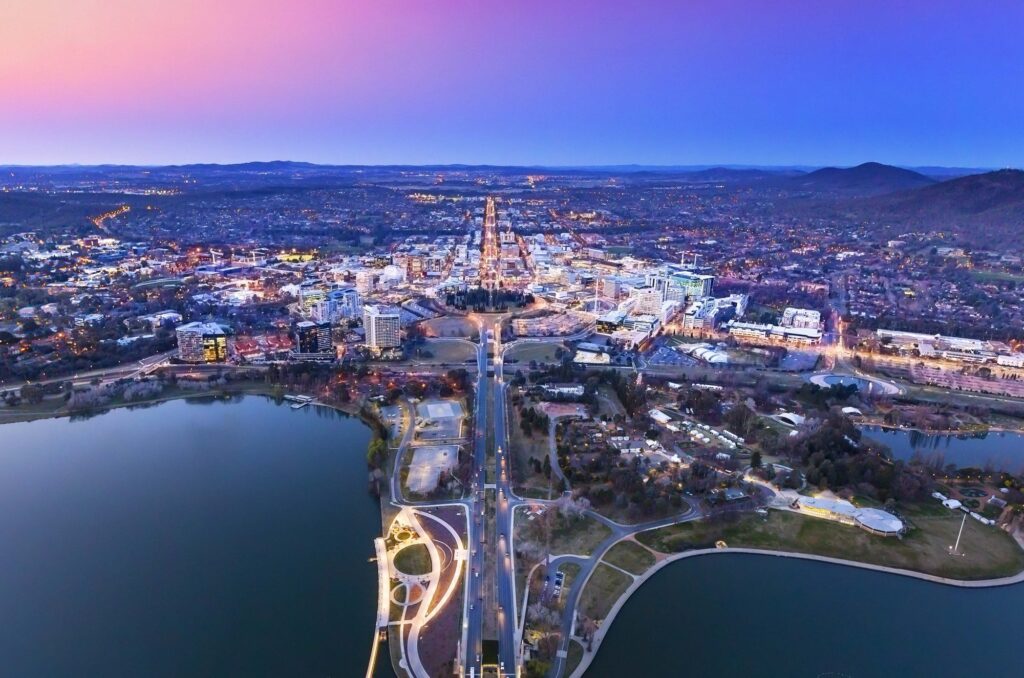
Canberra, the capital city of Australia, is a uniquely designed city known for its extensive green spaces, cultural institutions, and vibrant political scene. Located in the Australian Capital Territory (ACT), Canberra was purpose-built as the nation’s capital and stands out for its planned layout, rich history, and modern amenities.
One of Canberra’s most distinctive features is its meticulous design by American architects Walter Burley Griffin and Marion Mahony Griffin. The city’s layout incorporates geometric motifs such as circles, hexagons, and triangles, with large green spaces and bodies of water integrated throughout. Lake Burley Griffin, an artificial lake at the heart of the city, serves as a focal point and is surrounded by parks, walking paths, and cultural institutions.
As the political hub of Australia, Canberra is home to the Australian Parliament House, an iconic structure known for its unique design and sweeping views of the city. Visitors can take guided tours to learn about the legislative process and the history of Australian politics. The Old Parliament House, now the Museum of Australian Democracy, offers additional insights into the country’s political heritage.
Canberra boasts a wealth of cultural attractions. The National Gallery of Australia houses an extensive collection of Australian and international art, including significant works by Indigenous artists. The Australian War Memorial is both a museum and a shrine, honoring the service and sacrifice of Australian military personnel. The National Museum of Australia provides a comprehensive look at the nation’s history, culture, and people through interactive exhibits and multimedia displays.
The city’s commitment to education and research is evident in institutions such as the Australian National University (ANU), one of the country’s leading universities. ANU attracts students and scholars from around the world, contributing to Canberra’s vibrant and diverse academic community.
Canberra is also renowned for its natural beauty and outdoor activities. The city is surrounded by bushland, national parks, and nature reserves, offering ample opportunities for hiking, cycling, and wildlife observation. The Australian National Botanic Gardens showcase the diversity of Australia’s plant life, while Namadgi National Park, located just outside the city, provides stunning landscapes and a chance to explore the Australian bush.
The city’s culinary scene is diverse and growing, featuring a range of dining options from fine dining restaurants to casual cafes and food markets. Canberra’s cool climate wine region produces excellent wines, with many vineyards and wineries offering tastings and tours. The Capital Region Farmers Market and the Old Bus Depot Markets are popular spots for fresh produce, artisanal products, and local delicacies.
Canberra hosts numerous festivals and events throughout the year, reflecting its cultural diversity and community spirit. The National Multicultural Festival celebrates the city’s cultural diversity with food, music, and performances from around the world. Floriade, an annual flower and entertainment festival, attracts thousands of visitors with its stunning floral displays and garden-themed activities.
In terms of quality of life, Canberra consistently ranks highly due to its clean air, low crime rate, and high standard of living. The city’s well-developed infrastructure, efficient public transportation system, and emphasis on sustainability contribute to its reputation as a great place to live and work.
Overall, Canberra is a city that offers a unique blend of political significance, cultural richness, and natural beauty. Its planned layout, vibrant community, and high quality of life make it a distinctive and appealing destination in Australia.
1. Grenoble, France
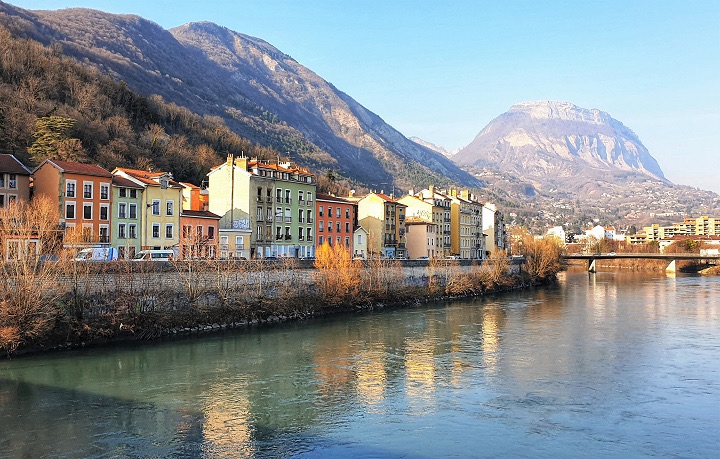
Grenoble, nestled in the French Alps, is a vibrant city known for its stunning natural surroundings, rich history, and strong emphasis on science and technology. Often referred to as the “Capital of the Alps,” Grenoble is the perfect blend of urban sophistication and outdoor adventure.
One of Grenoble’s most notable features is its picturesque setting, surrounded by mountains such as the Chartreuse, Vercors, and Belledonne ranges. The city’s location makes it a gateway to numerous outdoor activities, including hiking, skiing, and climbing. The Bastille, a historic fortress perched on a hill overlooking the city, offers breathtaking views and can be accessed via a scenic cable car ride from the city center.
The city’s history dates back over 2,000 years, and its rich past is reflected in its architecture and cultural institutions. The Grenoble Museum, one of France’s most prestigious art museums, houses an impressive collection of artworks from the Middle Ages to contemporary times. The Dauphinois Museum, located in a former convent, provides insights into the cultural heritage and history of the Dauphiné region.
Grenoble is also known for its vibrant cultural scene. The city hosts numerous festivals and events throughout the year, such as the Grenoble Jazz Festival, the Short Film Festival, and the Cabaret Frappé music festival. The Maison de la Culture, a key cultural venue, offers a diverse program of theater, dance, and music performances.
A significant aspect of Grenoble’s identity is its focus on science and innovation. The city is home to several major research institutions and universities, including the Université Grenoble Alpes and the Grenoble Institute of Technology. The presence of the European Synchrotron Radiation Facility and the Institut Laue-Langevin, both leading research facilities, underscores Grenoble’s reputation as a hub for scientific research and development.
Grenoble’s commitment to sustainability and environmental consciousness is evident in its urban planning and public policies. The city boasts extensive cycling paths, efficient public transportation, and numerous green spaces, making it a model for sustainable living. The Paul Mistral Park and the Jardin des Plantes are popular spots for relaxation and recreation.
The culinary scene in Grenoble is diverse and reflects the region’s rich gastronomic heritage. Traditional dishes include gratin dauphinois, a creamy potato casserole, and raclette, a dish featuring melted cheese served with potatoes and charcuterie. The city’s markets, such as the Estacade Market, offer fresh local produce, cheeses, and artisanal products, providing a true taste of the region.
Grenoble’s economy is dynamic and diverse, with strong sectors in technology, research, and education. The city’s business environment is supported by numerous innovation hubs and technology parks, fostering collaboration between academia and industry.
In terms of quality of life, Grenoble offers a high standard of living with its excellent healthcare, education systems, and vibrant community life. The city’s compact size and efficient transportation network make it easy to navigate, while its proximity to the Alps provides endless opportunities for outdoor recreation.
Overall, Grenoble is a city that beautifully combines natural beauty, historical richness, and modern innovation. Its unique setting, cultural vibrancy, and emphasis on sustainability make it an appealing destination for visitors and a wonderful place to live and work.
